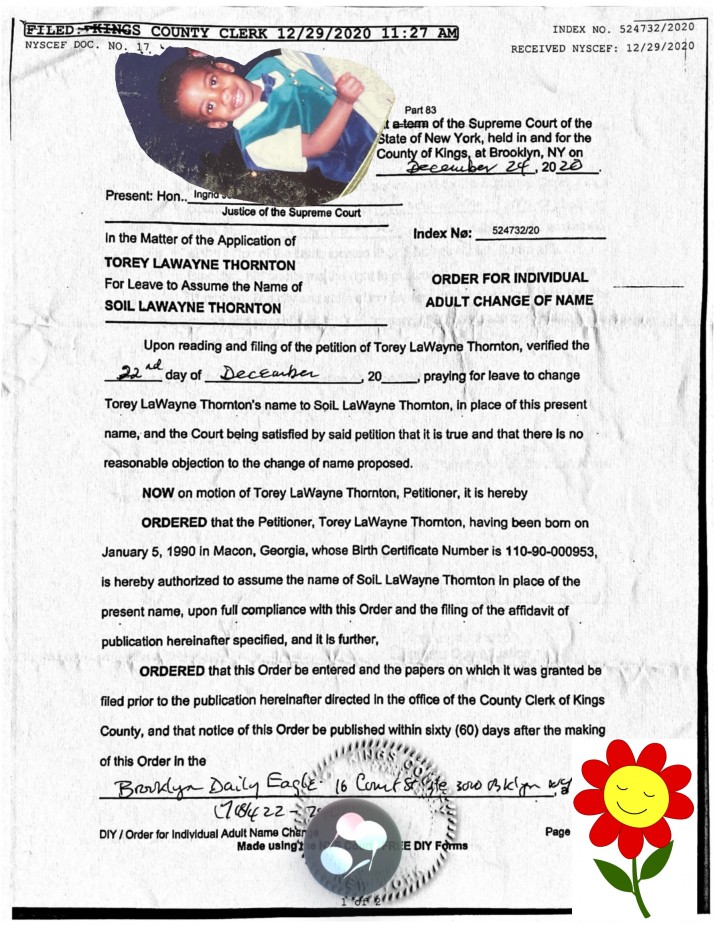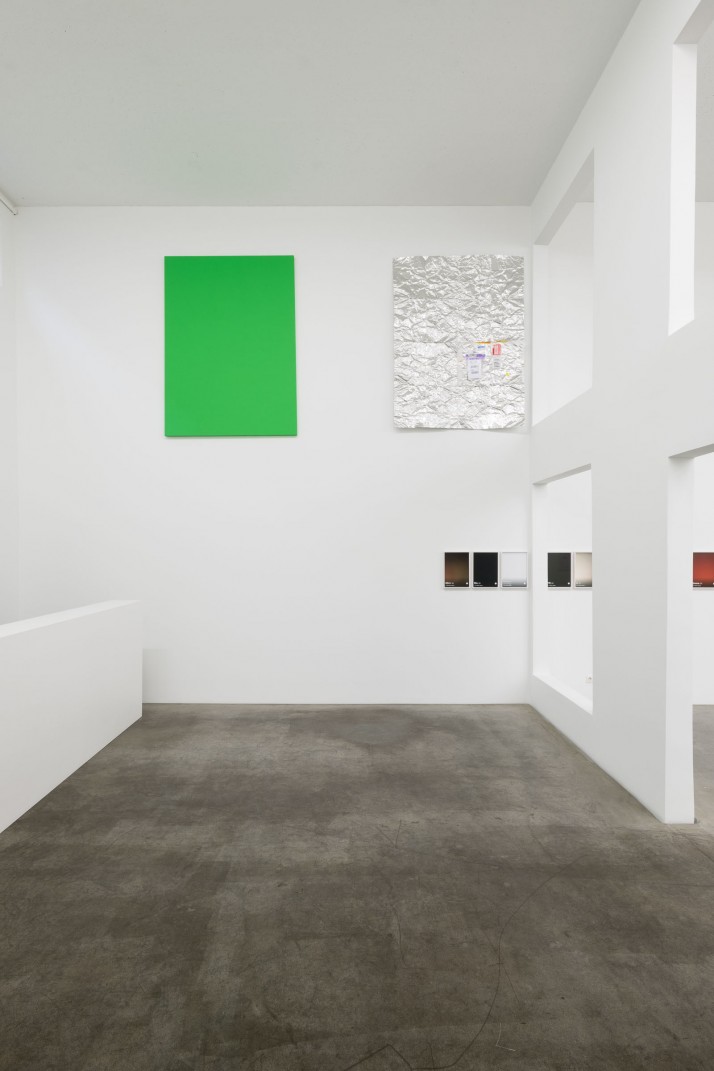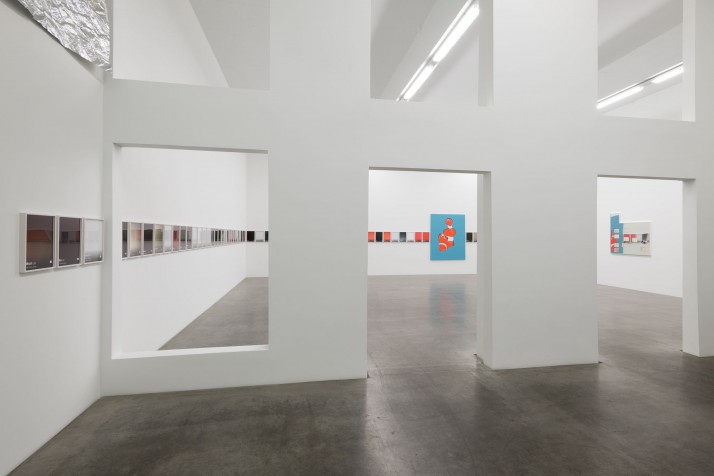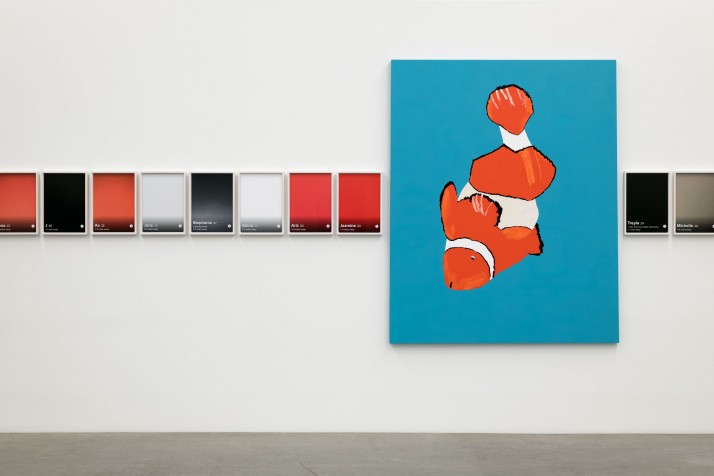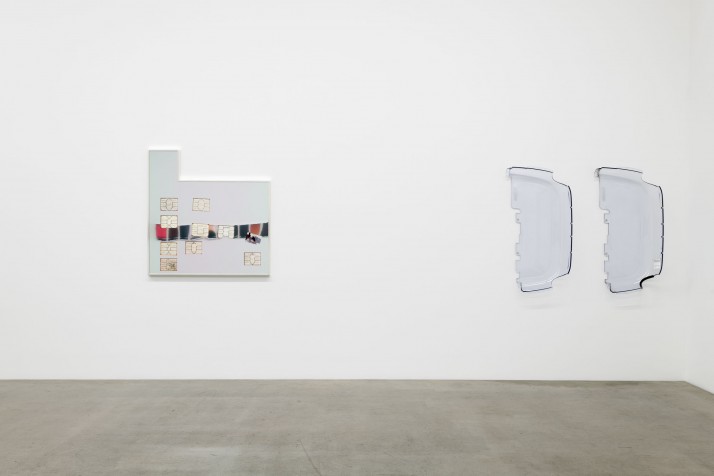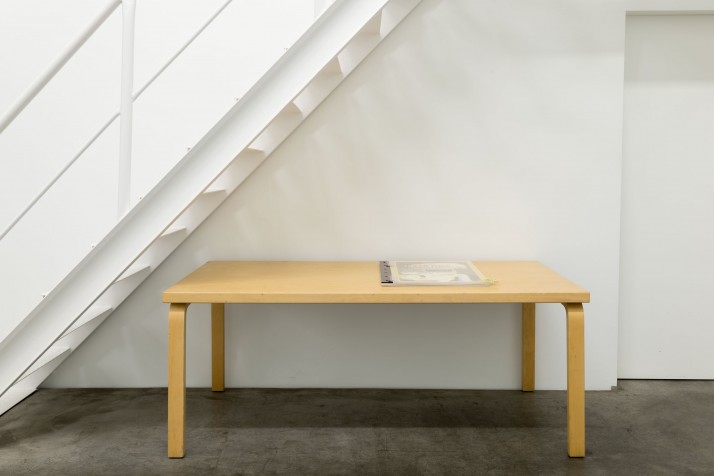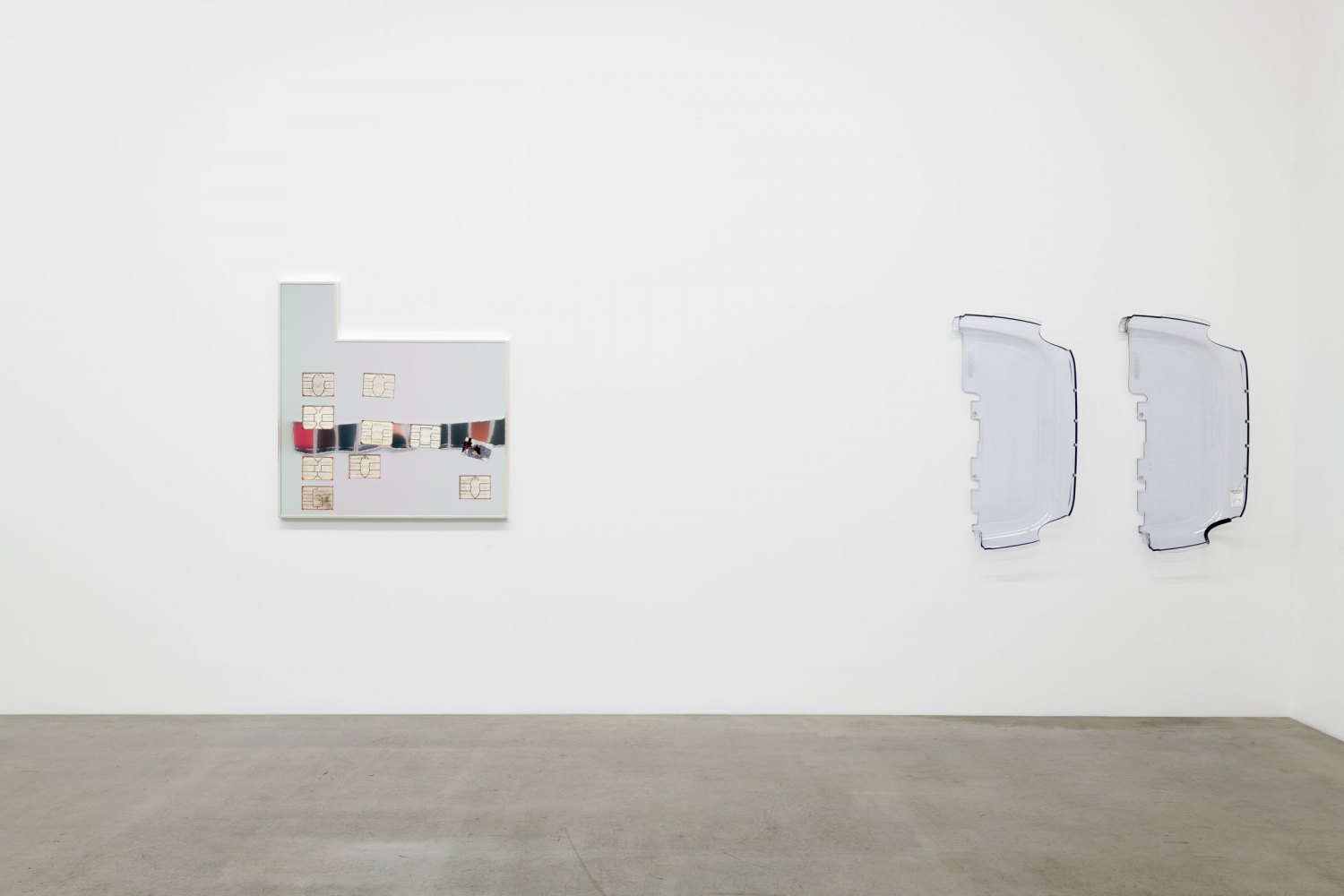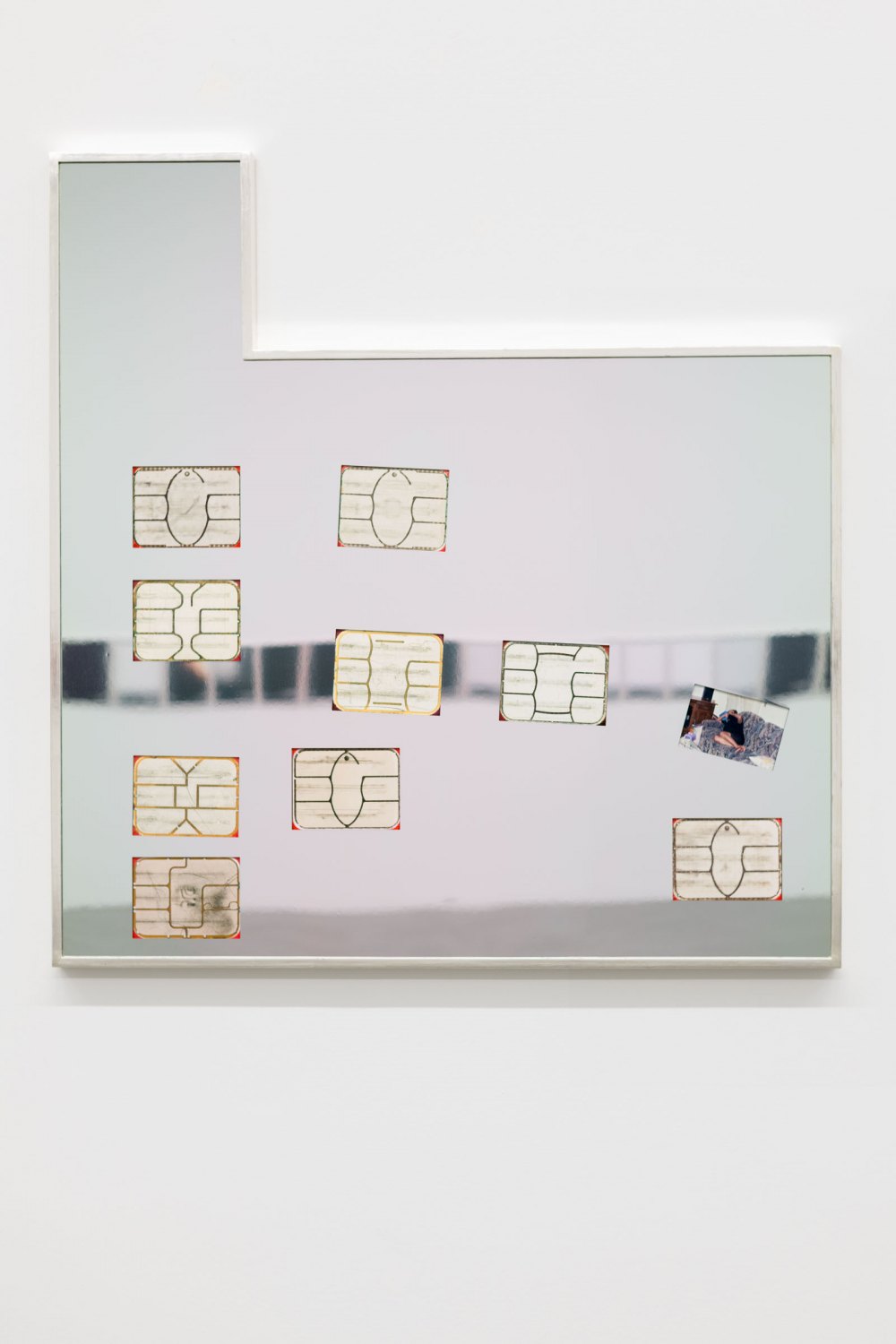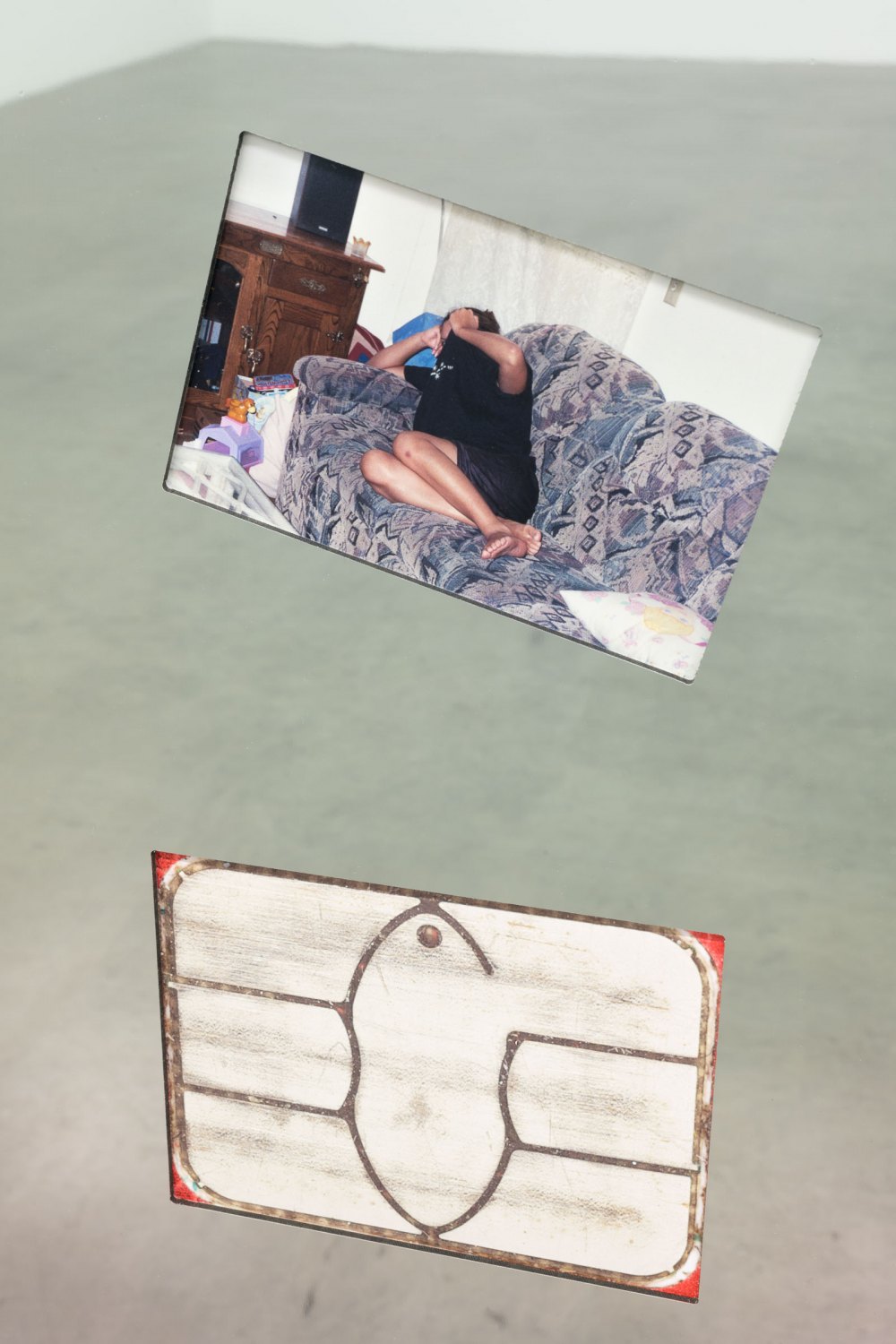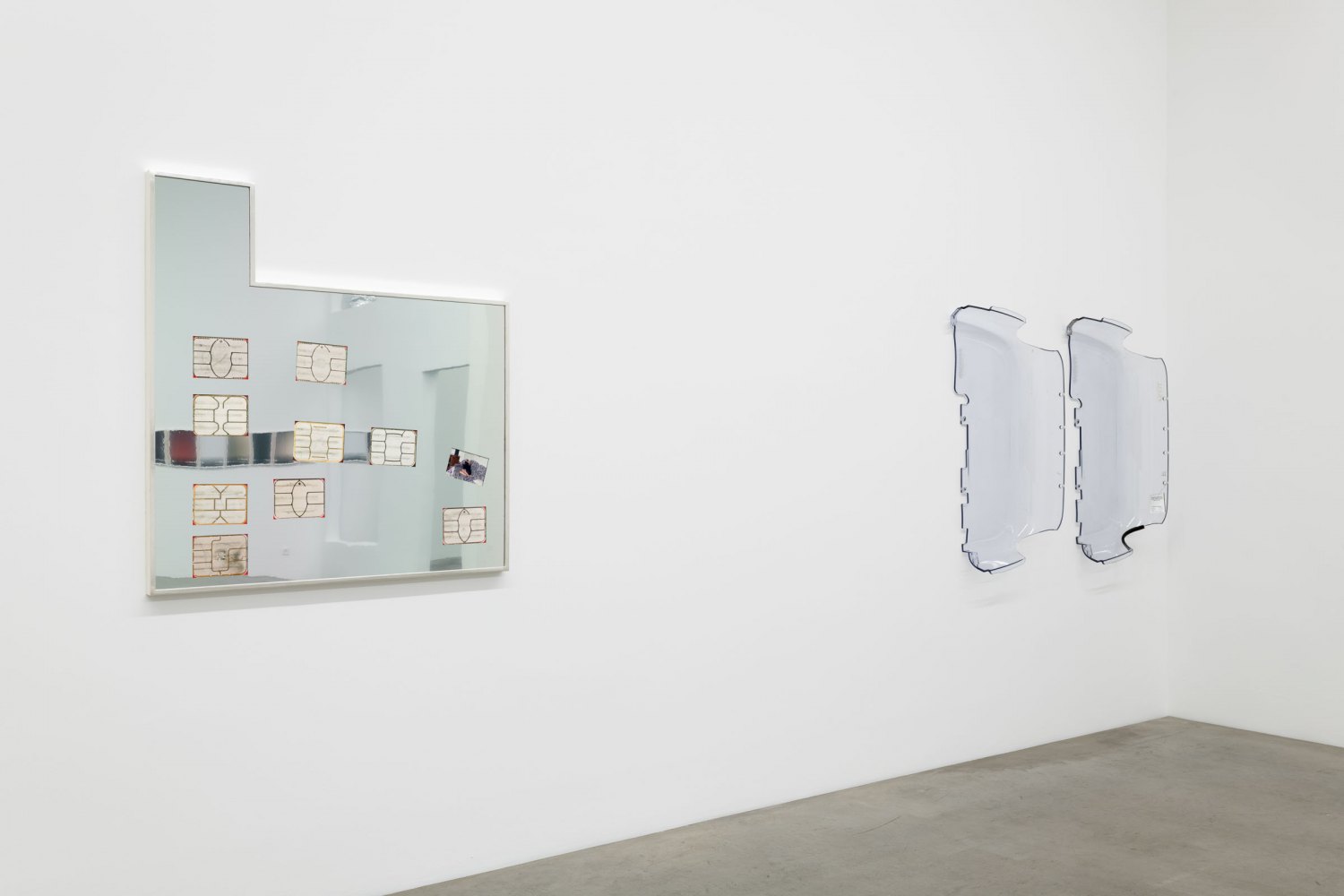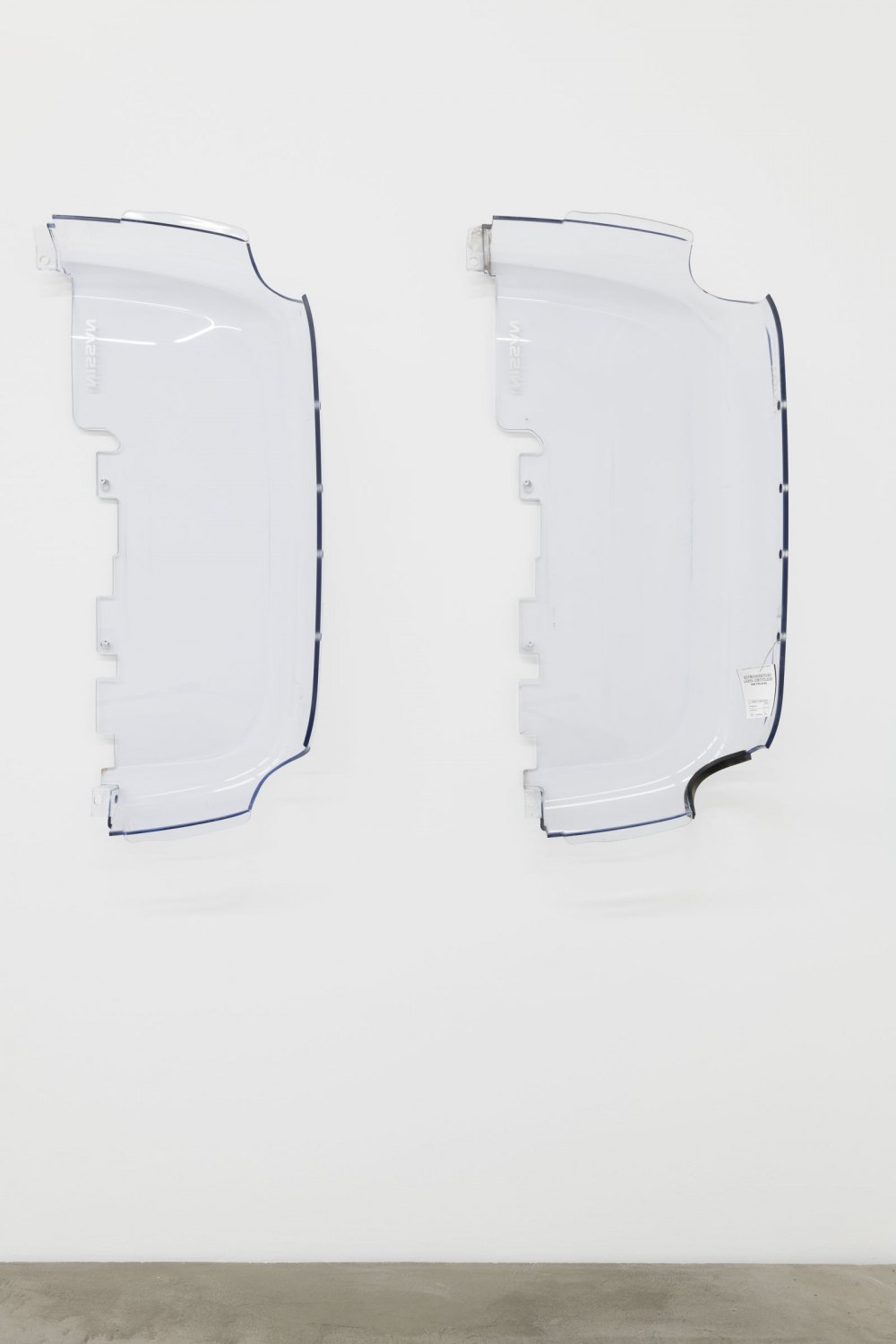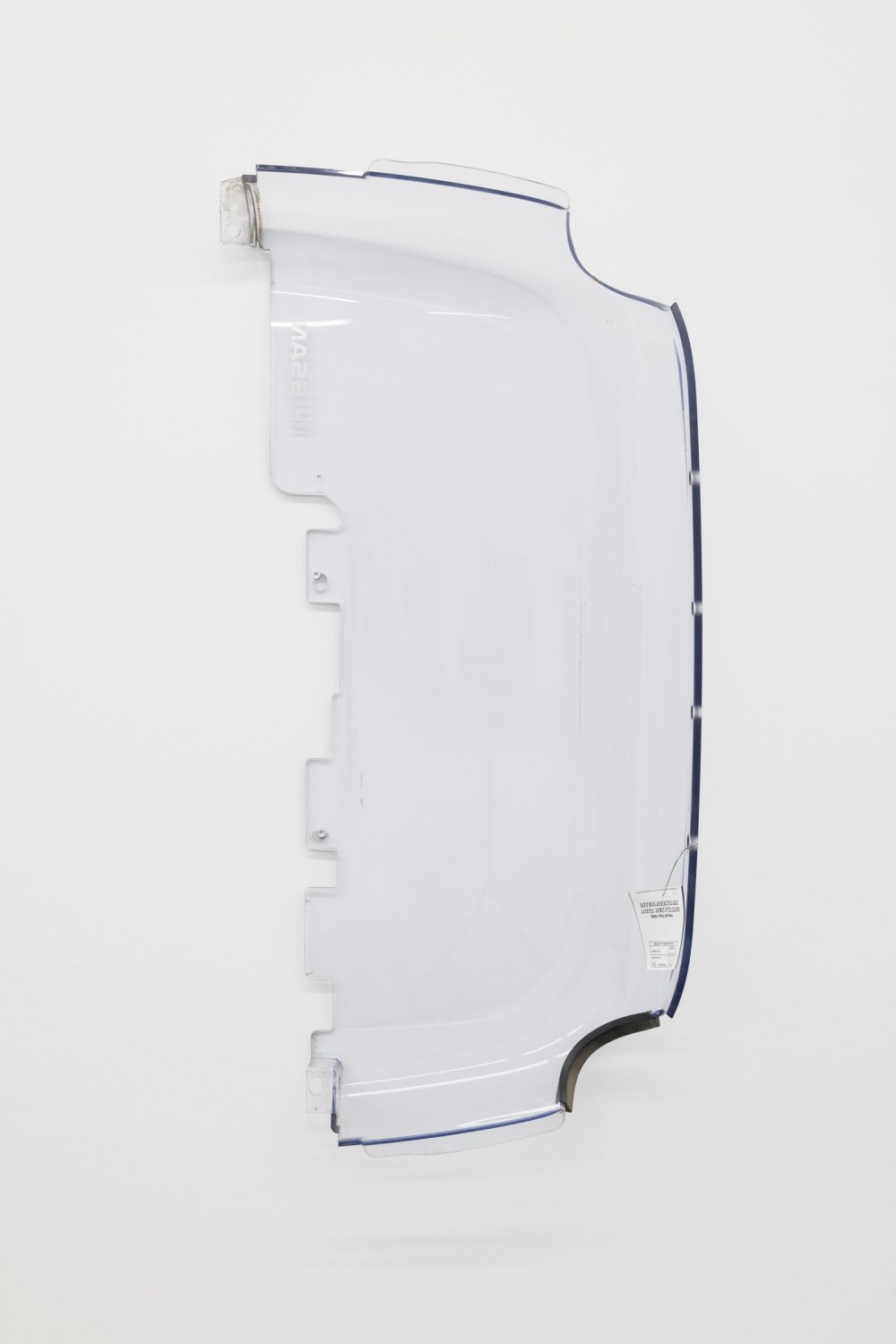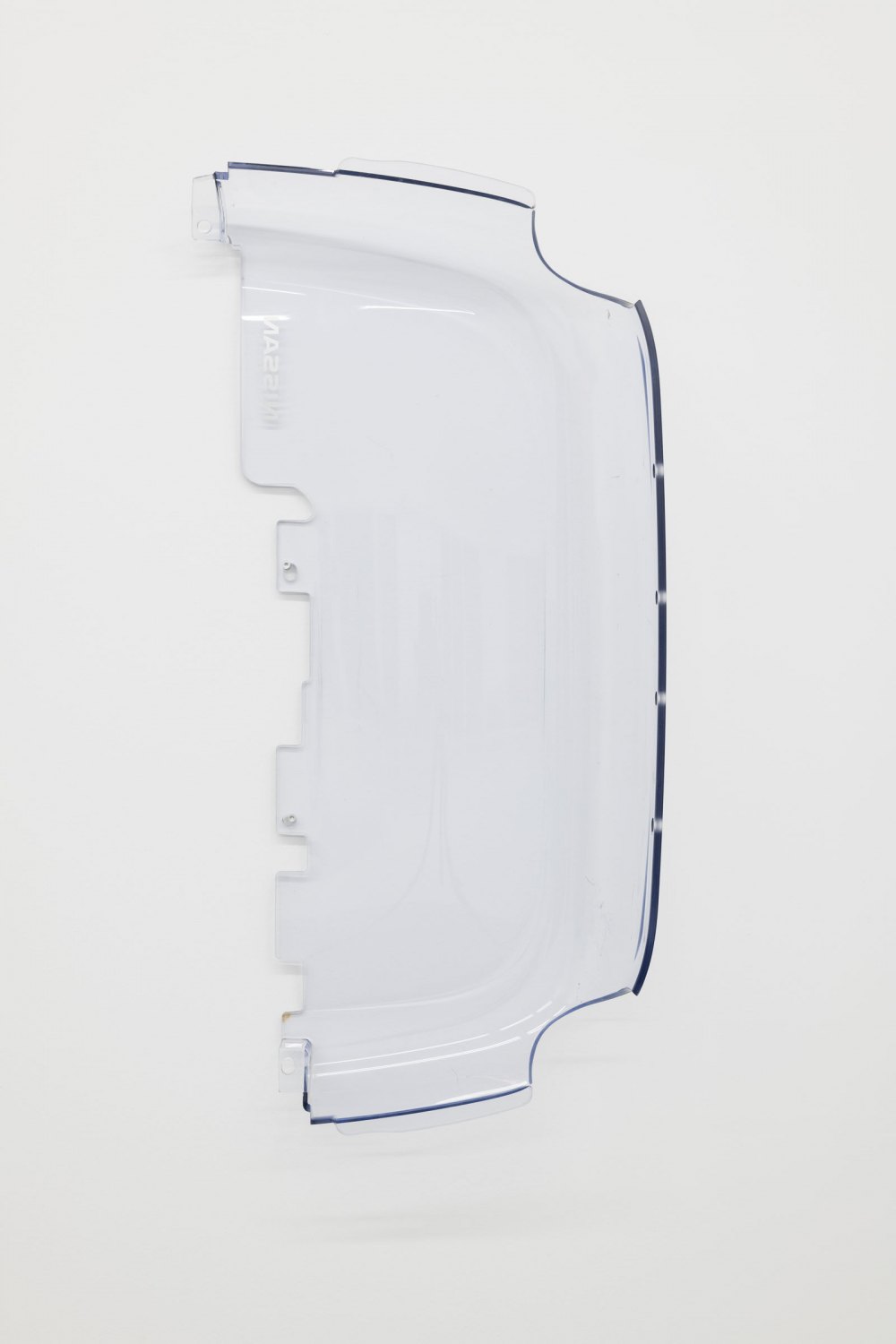Hi, hey, hello, thank you for looking and giving and reading, absorbing. I just wanted to place more raw thoughts here as this show feels like one of the most raw exhibitions I’ve ever made. I forget sometimes that I am an artist and I can experiment with new ways of presenting and hope for new understandings through these various approaches.
again
Ranting, who cares for you—they could care less. Carelessness.
again
Bio this bio that, biography as trap?
again
Always wondering about the no face, the removal of the born brand. Bourne Identity, jasonwas born.
again
Wanting to be dematerialized, shedding self through looking at self with lights and mirrored eyeglasses since a very young age. I remember googling certain artists to find not a single image of them present, making me quite envious of this actualization of the art as itself, under the name (insert proper noun), which was free, in ways, of identity.
again
I’ve always run away from using my identity in my work, in the explicit sense, but labor and the systems it’s tied to threads back to the subject (maybe it presents as the microcosm of various social systems and economies as a whole). You can only hope that you are unraveling strange systems of the world we live inside of, sometimes quietly and other times more overtly.
again
There’s a humor in attempting the out of body float, seeing oneself as you are possibly seen by the public or another, an impossible exercise in ______________.
again
Who presents like what, and is ignored and/or given the benefit of the doubt versus who endlessly questioned and tested, therefore causing reaction or retaliation from the “specimen,” the body, the person in question. We get tired but it’s ok, I guess, it’s thought.
again
Prove prove prove your worth.
again
It’s useful at times to use yourself as a guinea pig to explore or analyze societal precarity, oppressive infrastructures or even complex pleasures but how easy is it to begin to talk yourself into perpetuating ideas of narcissism and vanity play, slippages abundant? The fine line. How often are vanity and narcissism excused through art making and applauded or supported via the popular idea of artist (versus artwork) as commodity or capital, groomed celebrity morphing for the gain of others? (Insert movies, articles, and artist names that stepped juuust right, for referent and support.) Rise and fall fetish too?
again
How much do these structures reproduce the activation of identity as a productive mode for art-making? How many weak spots does all this hold and where and when is this approach to producing work viable and fresh, meaningful?
again
social protest
again
There are various modes of production from mental to physical or hands on, but by reevaluating the differentiation between populist and fine art material, through various weddings of said materials, there’s hopes to flatten the curve of hierarchal approaches to such. What can be used (in theory or practice) to displace ideas and exchange them for others, to re-signify or elude? A dull highlighter may be softer on the eyes.
again
What’s produced by an artist and is considered of value? Andrew asked if I meant material as in to hold or as in ideas, and I meant the latter mostly but both of these things inform and effect one another, the idea/content and the object/tactile.
again
_____
Instead of a traditional interview, Pujan and I worked on this project for Dazed magazine’s spring 2020 issue (released in February 2020) and after lots of conversation and exchange Pujan wrote a text consisting of five parts. I’ve included two of them below.
again
4. It reads a bit like a war diary: When the editors of the art journal October assembled for their first roundtable discussion in 1993, the initial idea was to critically respond to the Whitney Biennial’s institutionalisation of identity politics. “The Politics of the Signifier: A conversation on the Whitney Biennial” was ambitious in focusing on the locality of the political in art and the relation between the body of the artist and their body of work. At the time, anybody acquainted with the influential journal knew what to expect: firstly, the October staff would localise the medium of politics in its formal ambiguity, its mode of constructing a public arena dominated by uncertainty. Secondly, they would defend the work against the artist, arguing that neither the identity nor the intention of the artist could influence what could be verified only by the work itself, rendering the whole ambition of identity politics kind of pointless. Instead, the supposed takedown of the Whitney Biennial and identity politics in general turned over the course of the conversation into a sparring match between the editors. Benjamin Buchloh went furthest in his move against the dogma of the journal. Ambiguity, uncertainty and the complexity of aesthetic experience are, he argues, products of a liberal ideology which universalises the bourgeois subject and ignores the multitudes not privileged to participate in this realm. That is, one can find the political in art not necessarily in its formal sophistication but in its establishment of new forms of communication with audiences previously excluded from the exhibition space. Moreover, Buchloh continues, the much-heralded death of the author must be adjusted as well: as“exclusion and marginalisation do bring you closer to the reality of oppression and hold you in that position,” it becomes clear that the identity of the producer plays a crucial role in realising the meaning of the work. It’s probably the combination of these two assertions that render the task of “consolidating identity” of such importance to him.
again
5. In his book Proxies: Essays Near Knowing (2016), American poet Brian Blanchfield writes: “The mirror is not a depth into which to view the reflection of one’s composed facade, but, rather a surface on which to manifest what comes from within.” Relating an anecdote about how his face was partially bitten away by a dog when he was a child, Blanchfield explores the fear of losing control over one’s interiority, of revealing one’s most intimate secret, and, as he adds only in a side-note, his struggles with coming out. However, while he is adamant to use himself and nothing but himself as a reference, why this feeling that the writing is not about himself? Why don’t his disclosures result in moments of identification so typical of this mirror-obsessed genre dubbed auto-fiction? Maybe it’s because his revelations are not about revealing himself, but about moving beyond himself. In simultaneously grasping his position in space as well as appreciating the relationships unfolding within himself, he realises race, class and gender not as abstract schema but as embedded power relations. The self is an environment, and Blanchfield formulates how to struggle with the way it emerges and where to demarcate the porous divisions of inside and outside. It is in the midst of this struggle for articulation that “there are a number of opportunities, precisely when one is petrified, to break the glass.”-Five Things You Might Want To Know About The Conflict Between Identity And Identification by Pujan Karambeigi with Torey Thornton.
again
I also want to thank and pay respect to any and all those making work and, generously and thoughtfully presenting it in this moment, the future, world of the now. ¬
Sincerely always,
again
me
______
SoiL Thornton
Moreover, does productivity know what it’s named, maybe it calls itself identity?
26.11.2021 – 22.01.2022
